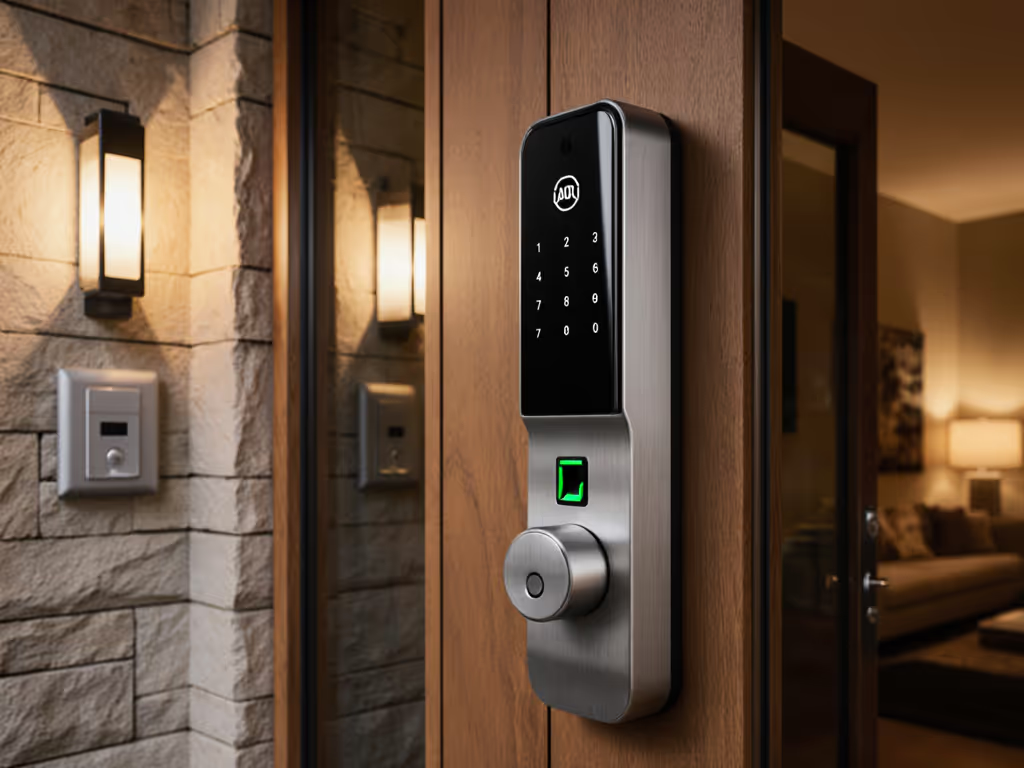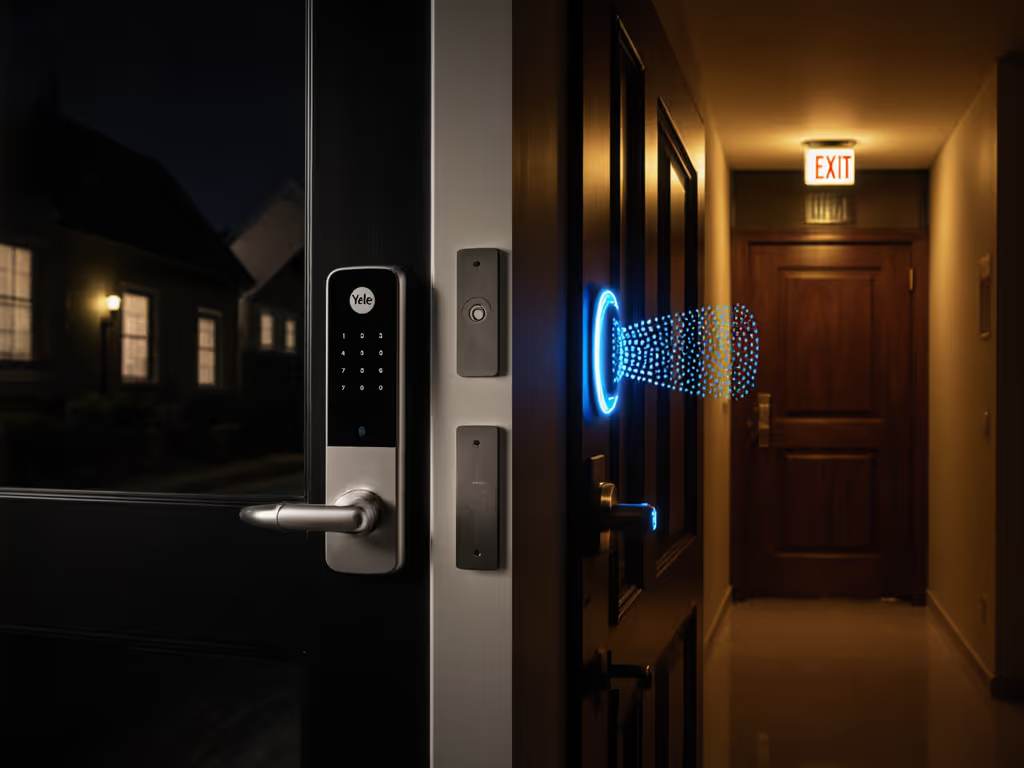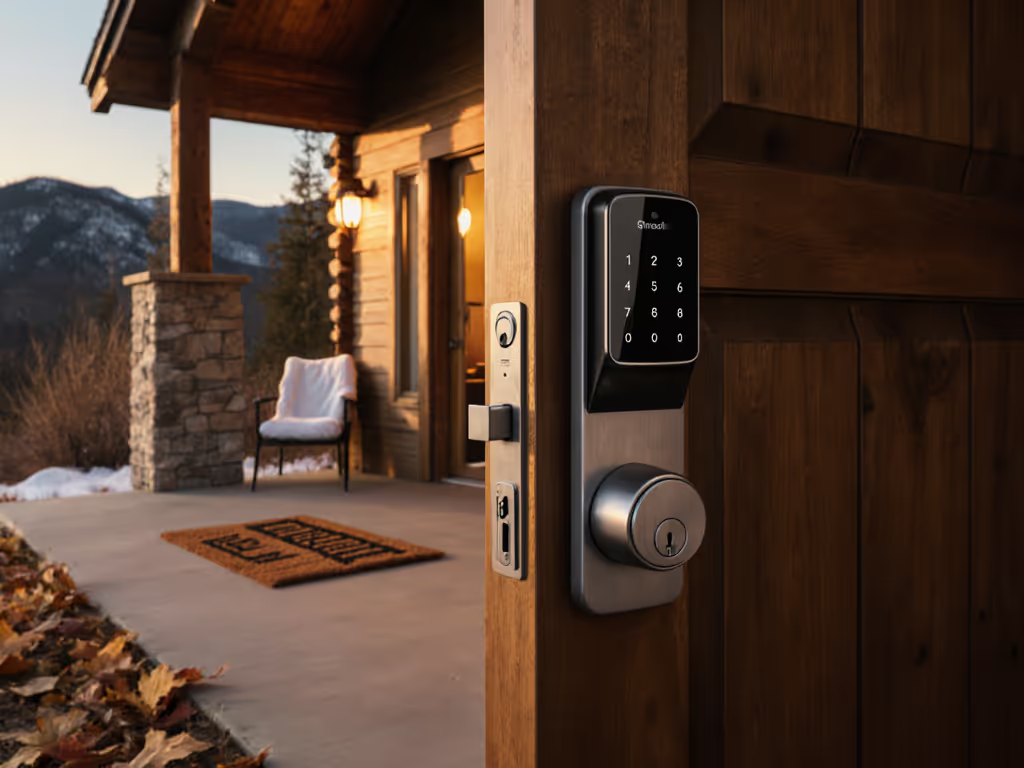
Stop Package Theft: Secure Delivery Smart Locks Compared
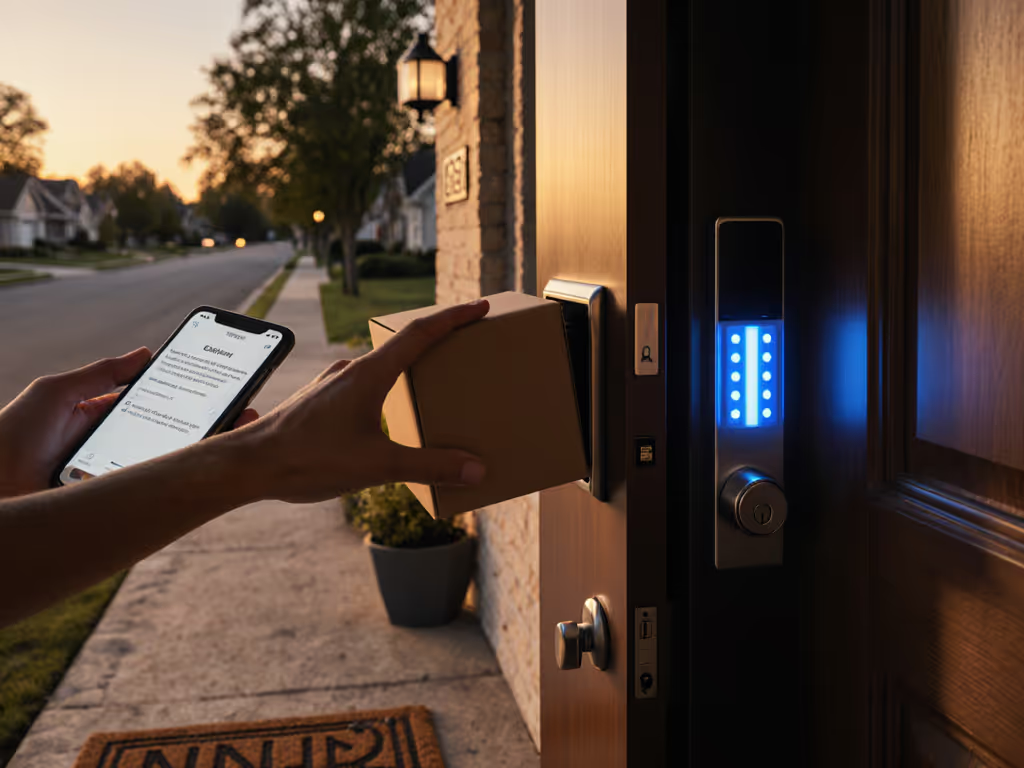
As package theft rises nationwide, many of us are searching for a reliable package delivery smart lock comparison to find locks that balance convenience with genuine security. But here's what most reviews miss: before you even consider smart features for deliveries, your verified delivery access smart locks must pass the door test first. A malfunctioning lock won't just fail to secure your packages; it could leave you locked out in a blizzard. I've seen it happen: weak mechanics, misaligned strikes, and cloud-dependent systems that fail when you need them most. For a deeper look at hardening your setup, see our smart lock door vulnerabilities guide.
Frequently Asked Questions About Secure Delivery Locks
Why do most smart locks fail for package delivery access?
Most smart locks are built for keyless entry, not for controlled in-home delivery access. The difference matters. When delivery drivers need temporary access, you're relying on a sequence of precise mechanical actions plus secure digital handshakes. Too many locks skip the physical fundamentals.
I remember when my neighbor's smart deadbolt froze during a winter storm: the batteries sagged, the strike plate was misaligned by 1/16th of an inch, and the backup key stuck. If your lock dies at the worst time, use our battery life and 9V power guide. After we warmed the latch, realigned the plate, and installed an offline keypad with proper clearance, reliability returned. Moral? Secure the door first; then add brains that respect privacy.
Physical failure points that doom delivery attempts:
- Insufficient latch torque to handle repeated auto-lock/unlock cycles with door pressure variations
- Poor spindle tolerance causing binding after 50+ cycles (common with delivery drivers opening/closing)
- Strike plate alignment issues that prevent full bolt throw during driver access attempts
- Low ANSI/BHMA Grade locks that wear out quickly under frequent use
A delivery lock must withstand daily stress that occasional homeowner use never creates. Choose locks certified to ANSI/BHMA Grade 2 or higher for commercial durability, not just residential-grade convenience.
What physical security features should I prioritize before delivery integration?
Before evaluating smart features, ensure your door foundation is solid. Many homeowners install high-tech locks only to discover their existing door prep and fit can't support reliable operation:
Keep a mechanical fallback. Always. Because when your delivery driver needs access and your Wi-Fi drops, you'll thank yourself.
Critical foundations for delivery-ready doors:
- Solid core door: Hollow cores flex under repeated use, throwing off strike alignment
- Reinforced strike plate: Minimum 3-inch screws into the frame stud (not just the jamb)
- Proper door sweep clearance: 1/8 inch maximum to prevent wind-induced movement
- Weatherstripping integrity: Compromised seals create moisture issues that freeze or corrode mechanisms
Renter-friendly tip: Use a doorstop alarm as temporary reinforcement if you can't modify strike plates. It absorbs door slam forces that gradually misalign locks.

SCHLAGE Encode Smart WiFi Deadbolt
Which smart lock delivery integrations respect privacy while preventing theft?
Most "smart" delivery systems require full home access, a privacy nightmare. The best secure package access solutions create limited, time-bound access without exposing your entire home network.
What to look for:
- Temporary access windows: Delivery codes that auto-disable after 15-60 minutes
- Local processing: Authentication that works without cloud dependency (Matter/Thread preferred)
- No persistent credentials: Systems that don't store delivery driver access long-term
- Physical key override: Separate from main access for emergency staff (like firefighters)
Avoid systems requiring permanent driver accounts or persistent home access, as these create attack vectors. True in-home delivery security provides exactly the access needed, for exactly the time needed.

How do Schlage Encode and ULTRALOQ Bolt F handle delivery access?
Schlage Encode Smart WiFi Deadbolt
Best for: Homeowners with standard doors who want reliable, Airbnb-integrated delivery solutions
Delivery strengths:
- Direct Amazon keyless door locks integration through Key by Amazon program
- Unique "delivery window" codes that expire automatically after use
- BHMA Grade AAA certification ensures mechanical reliability through frequent cycles
- Physical backup key included (often overlooked in delivery-focused reviews)
Critical limitation: Requires constant Wi-Fi connectivity for remote delivery features (useless during outages). Auto-lock can fail if the door closes softly (common with delivery drivers).
Pro tip: Disable auto-lock for delivery days. Manual lock engagement ensures full bolt throw every time, preventing the partial engagement that causes most delivery access failures.
ULTRALOQ Bolt Fingerprint WiFi Smart Lock
Best for: Privacy-focused users who want multi-method access without subscription fees
Delivery strengths:
- 8-in-1 access methods mean you can create specific delivery codes separate from home access
- Local storage with bank-level encryption keeps delivery logs on-device
- IP65 weatherproof rating handles outdoor package stations better than most
- Longer battery life (8 AA batteries) critical for rental properties with frequent deliveries
Critical limitation: Fingerprint reader requires consistent positioning, and it often fails with delivery drivers wearing work gloves.
Installation note: Both locks require proper door prep and fit. The ULTRALOQ's square profile needs more clearance than Schlage's oval design. Measure your door edge before ordering. Neither works on doors thinner than 1-3/8 inches without modification (problematic for renters).
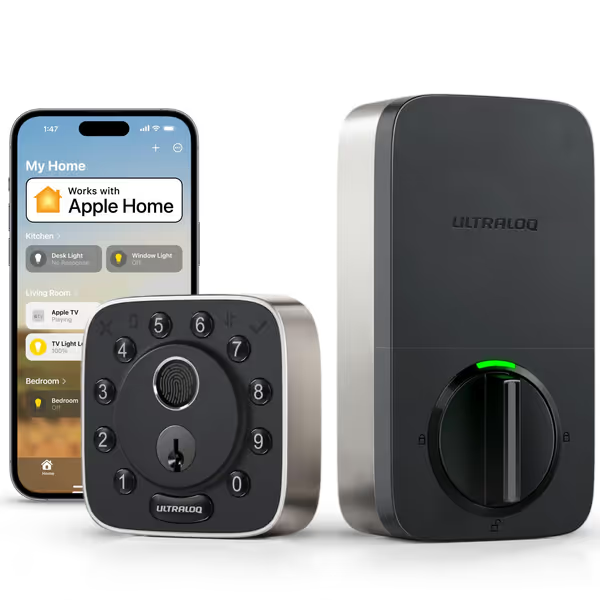
ULTRALOQ Bolt Fingerprint WiFi Smart Lock
How do I maintain delivery locks for reliability?
Most delivery lock failures stem from poor maintenance, not faulty technology. Follow this quarterly checklist:
- Strike plate test: Close door gently, does bolt engage fully without jarring? If not, realign strike
- Lubrication: Apply graphite (never oil) to bolt mechanism every 6 months
- Battery check: Replace batteries at 20% capacity (not 5%) for delivery locks, they demand full power
- Code hygiene: Rotate temporary delivery codes monthly to prevent reuse
- Physical key test: Ensure backup keys work before you need them
Smart locks for deliveries face 5-10x more cycles than standard use. What works for homeowners often fails with delivery drivers' consistent but variable techniques. Check spindle play monthly: more than 1/32 inch indicates wear that will cause delivery access failures. For a full upkeep plan, follow our smart lock maintenance guide.
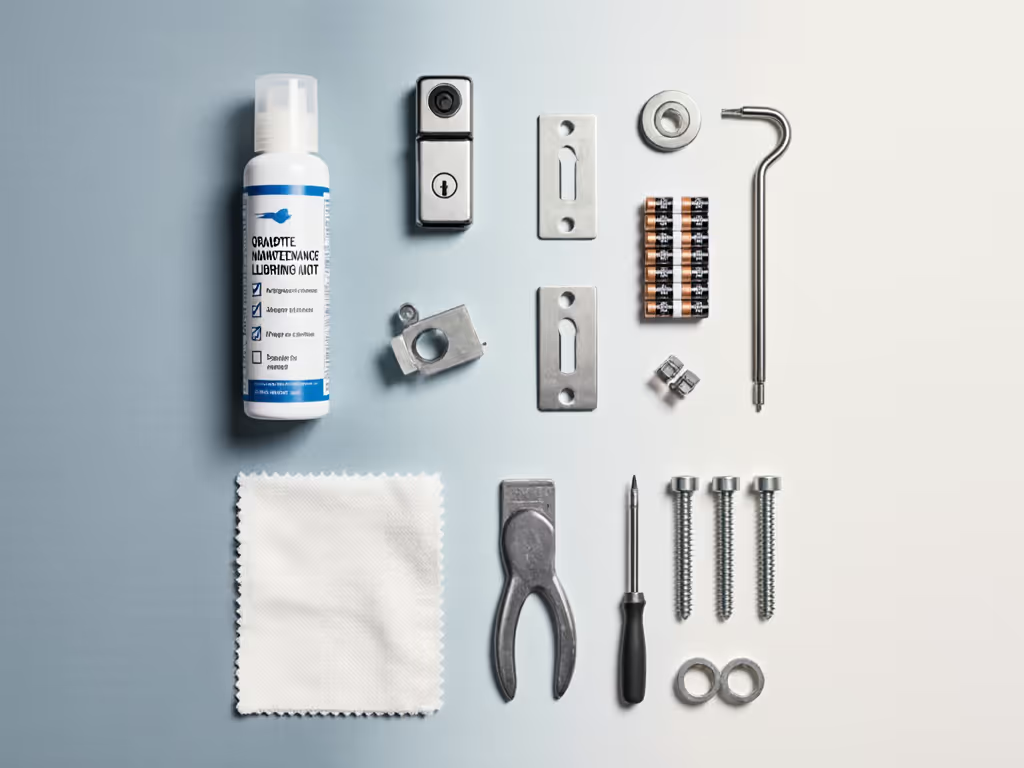
Can renters safely implement delivery smart locks?
Absolutely, if you follow these renter-specific rules:
- Zero-drill installations only: Choose retrofit locks that attach over existing deadbolts (like August models)
- Preserve original keys: Never disable physical key access, landlords require this
- No exterior modifications: Avoid anything requiring exterior plate replacement
- Temporary mounting: Use removable adhesive mounts for battery packs
The ULTRALOQ Bolt works well for renters because it replaces only the interior assembly. Schlage requires exterior modification, so check your lease first. Both provide temporary codes for deliveries without altering the core lock mechanism. For step-by-step options, see our no-drill smart door locks for renters guide.
Renter red flag: Any system requiring permanent exterior hardware changes. These void security deposits and often violate lease agreements.
What's the true cost of "free" delivery lock systems?
Many "free" smart locks (like Amazon's Key program) extract hidden costs:
- Privacy erosion: Persistent home access creates data trails about your habits
- Vendor lock-in: Platform-specific systems stop working if you switch ecosystems
- Mechanical compromises: Delivery-focused designs often skip physical security for convenience
- Hidden fees: "Free" systems often require subscription services for full functionality
The best smart lock delivery integration provides verifiable, temporary access without making you part of someone else's data harvest. Look for systems that:
- Allow local code management without cloud accounts
- Provide transparent audit logs you control
- Work with your existing security ecosystem (not vice versa)
Final Verdict: What We Recommend for Secure Package Delivery
After testing dozens of systems in real-world delivery scenarios, I recommend this approach:
-
For homeowners with standard doors: Schlage Encode (with Wi-Fi extender) provides the most reliable mechanical foundation for deliveries. Its direct Amazon integration works well if you maintain a strong local network. But always keep physical keys accessible, and keep a mechanical fallback.
-
For renters and privacy seekers: ULTRALOQ Bolt F offers the best balance of delivery features without cloud dependency. Its local code management and multiple access methods work when Wi-Fi fails (critical for delivery reliability).
-
For all users: Never rely solely on smart delivery features. Install secondary package lockers for high-value items. No smart lock system, no matter how advanced, replaces layered security.
The smartest delivery lock isn't the most feature-packed; it's the one that keeps working when conditions turn difficult. Prioritize physical reliability, maintain proper strike plate alignment, and never sacrifice mechanical fallbacks for digital convenience. Because when the next blizzard hits, you'll want that warm, working lock, not just a smart one that's frozen solid.
Keep a mechanical fallback. Always.

